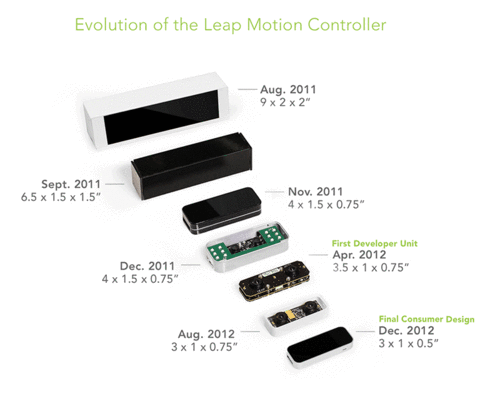Leap Motion has published a new blog post and associated video showing its highly anticipated motion controller working with Windows 8. The firm says it is “refining” this essential feature ready for the 22nd July launch (when pre-order customer units will ship).
The video shows a Leap Motion controller user selecting an app from the Windows 8 MUI then smoothly navigating through the information presented, scrolling, zooming, selecting content with easy smooth movements. Normal Windows 8 gestures such as closing an app by dragging down from the title bar work nicely too, as you might expect.
Leap Motion promises that OS-level functionality will work “from the second you plug in” without you having to install extra software or drivers. “With Leap Motion technology and Windows, you can do everything that’s possible with multi-touch inputs — without actually touching anything. This also means that existing applications in Windows 7 and 8 will respond to your natural hand and finger movements,” the company said on its blog. Furthermore we are informed Mac OS X fans are going to get a demo video shortly, showing Leap Motion hardware working on their OS of choice.

While this video concentrates on OS interactions and is the first to do so Leap Motion are also beavering away working on Airspace, its special motion controller enhanced app store/apps. Apps focussed upon “games, music, art, design, productivity, education, and more” are promised. The possibilities for Leap in content creation apps are very attractive, Leap has already highlighted some music creation apps and hopefully there will be some really accessible 3D modelling applications arriving. Leap say this app store will “make sure the Leap Motion experience is what we’ve planned all along: to be the most intuitive, natural, and magical way to interact with your computer and to transform how the world interacts with technology.”

Leap Motion won’t be confined to PCs. VentureBeat talked to Leap Motion’s COO Andy Miller a couple of weeks ago, who revealed “We’re looking to embed our tech into watches, and smartphones, and glasses, and everything”. So the hardware partnerships aren’t going to stop with ASUS and HP.













